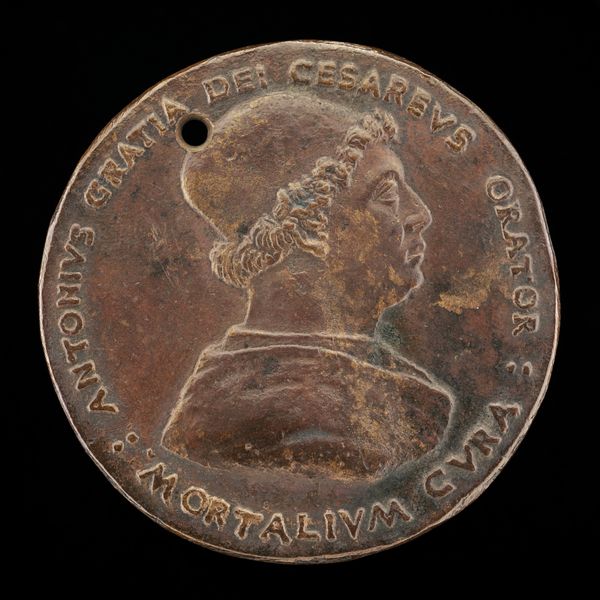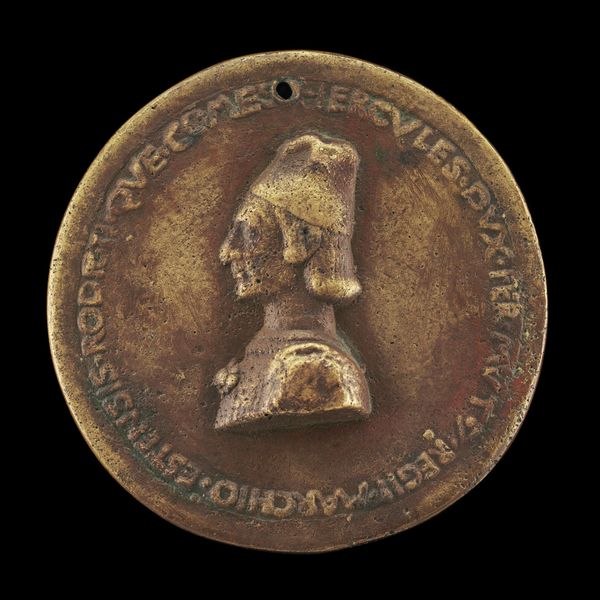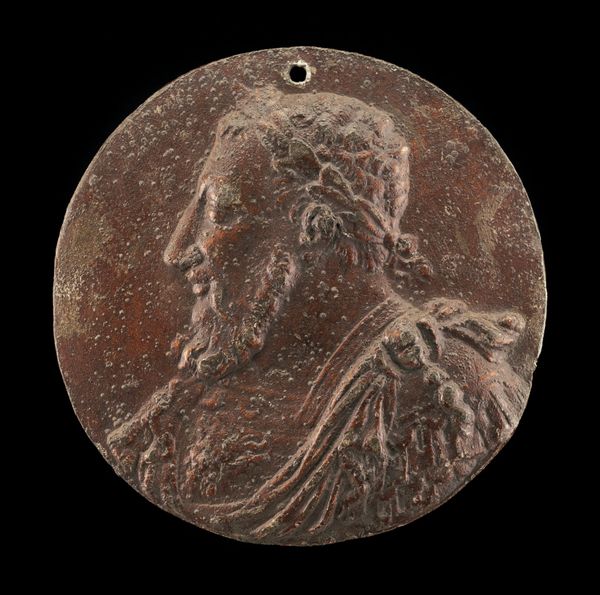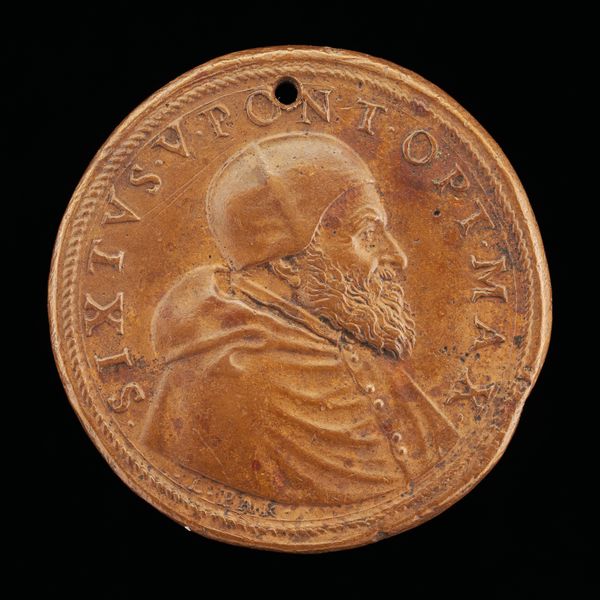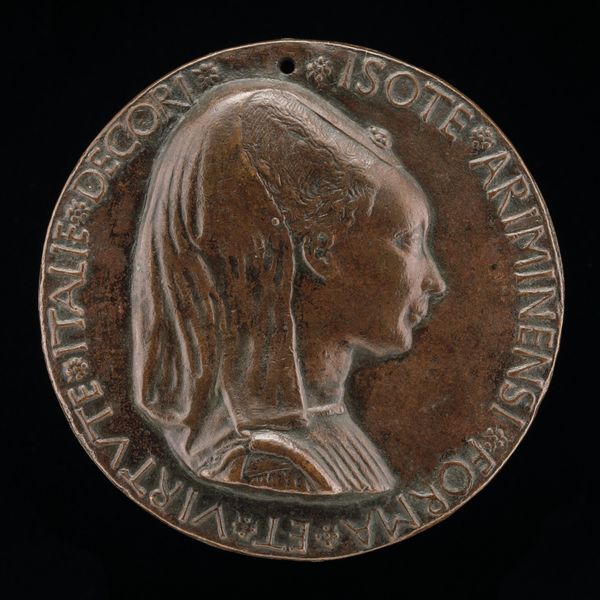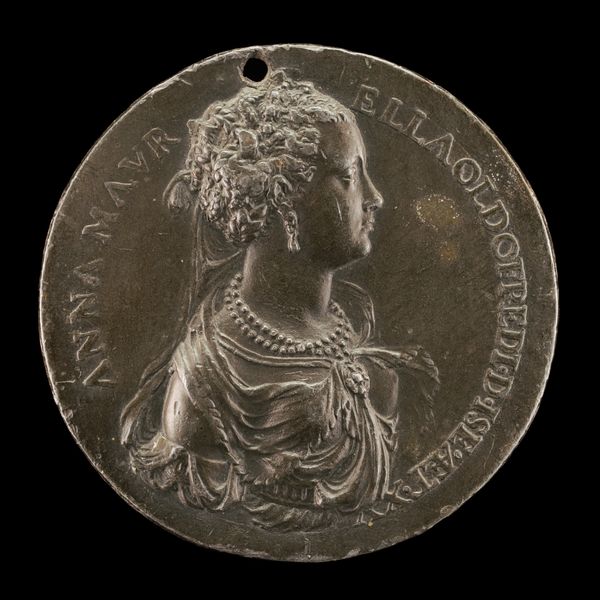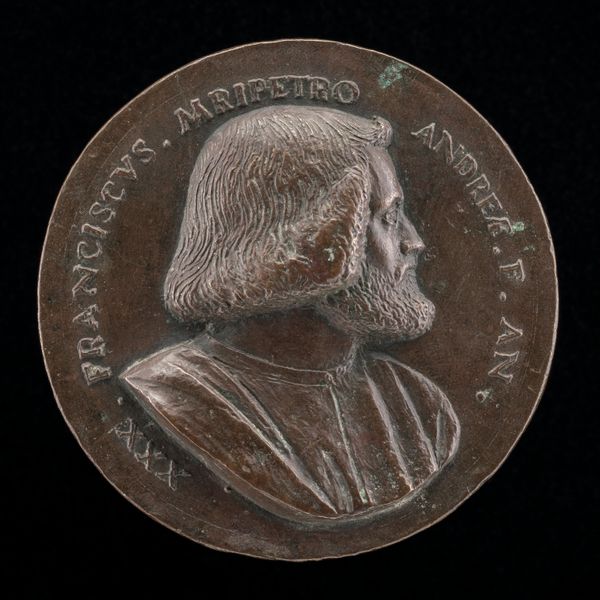![Battista Spagnoli of Mantua, 1447-1516, Carmelite Poet [obverse] by Mea](/_next/image?url=https%3A%2F%2Fd2w8kbdekdi1gv.cloudfront.net%2FeyJidWNrZXQiOiAiYXJ0ZXJhLWltYWdlcy1idWNrZXQiLCAia2V5IjogImFydHdvcmtzLzQ1NTYwMWYzLTI2MDUtNGE0Ni1hMzY3LTNmYjhjM2YyZTMxNi80NTU2MDFmMy0yNjA1LTRhNDYtYTM2Ny0zZmI4YzNmMmUzMTZfZnVsbC5qcGciLCAiZWRpdHMiOiB7InJlc2l6ZSI6IHsid2lkdGgiOiAxOTIwLCAiaGVpZ2h0IjogMTkyMCwgImZpdCI6ICJpbnNpZGUifX19&w=3840&q=75)
Battista Spagnoli of Mantua, 1447-1516, Carmelite Poet [obverse] c. 1513
0:00
0:00
metal, relief, sculpture
#
portrait
#
medal
#
metal
#
sculpture
#
relief
#
sculpture
#
italian-renaissance
Dimensions: overall (diameter): 3.93 cm (1 9/16 in.) gross weight: 21.88 gr (0.048 lb.) axis: 12:00
Copyright: National Gallery of Art: CC0 1.0
This portrait of Battista Spagnoli, a Carmelite poet, was made in bronze by the artist Mea sometime between 1510 and 1520. Bronze is an alloy, a combination of copper and tin, that has been used for millennia because of its durability, and capacity to capture fine details. This particular bronze was likely cast using the lost wax method, a process that has been around since the bronze age. The artist would have first created a wax model of Spagnoli, then encased it in clay to make a mold. After the clay hardened, the wax was melted out, and molten bronze was poured into the resulting cavity. Once cooled, the clay mold was broken away, revealing the bronze portrait. The appeal of bronze lies in its smooth texture and the warmth of its color. The casting process allows for precise replication, making it possible to produce multiple copies of a design. These multiples blur the boundaries of fine art and craft, reminding us that even the most artistic objects are deeply rooted in the history of making.
Comments
No comments
Be the first to comment and join the conversation on the ultimate creative platform.
